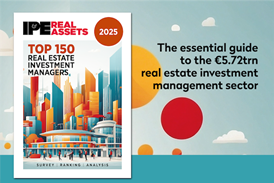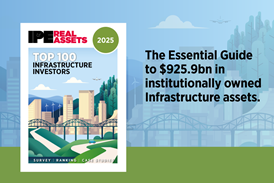Jones Lang LaSalle (JLL) has released a new report entitled 'Outperforming in European Retail Capital Markets' which identifies six key trends that will shape the European retail investment market during 2011. The first trend highlighted is multi-speed market acceleration: as the polarisation in pricing between institutional and non-institutional retail real estate continues, the strength of liability-driven investors has resulted in yield compression for prime, well leased properties offering long-term security. The arbitrage between bonds and real estate looks attractive for equity investors, which may cause further yield compression for core product, resulting in equity players locking down returns to match liabilities with a perception that income will remain secure.
Jones Lang LaSalle (JLL) has released a new report entitled 'Outperforming in European Retail Capital Markets' which identifies six key trends that will shape the European retail investment market during 2011. The first trend highlighted is multi-speed market acceleration: as the polarisation in pricing between institutional and non-institutional retail real estate continues, the strength of liability-driven investors has resulted in yield compression for prime, well leased properties offering long-term security. The arbitrage between bonds and real estate looks attractive for equity investors, which may cause further yield compression for core product, resulting in equity players locking down returns to match liabilities with a perception that income will remain secure.
Jeremy Eddy, head of EMEA Retail Capital Markets at Jones Lang LaSalle, said: 'For leveraged investors, the market might appear attractive now with low interest rates and relatively attractive pricing. This kind of market is often seen as the "playground" for the trading investor, with shorter hold periods and the consequent need for a sure-fire exit strategy. However, free cash-flows could be eroded as a result of rising European interest rates and upon exit the arbitrage against debt may result in higher exit yields and reduced profit. In addition, LTVs and debt availability remain constrained.'
2. Return of the missing investors - Over the past 12-24 months at the core end of the investor spectrum, the weight of money from institutional investors and new sovereign wealth capital entering the market has driven yield compression. Meanwhile, ‘value add’ assets, usually the domain of asset management orientated sector specialists and third party managed funds, have been impacted by a lack of investor depth that would typically target this product type. The return of this 'squeezed middle' between the institutional money and the private equity groups should result in yield compression of core-plus and value-added assets during 2011.
3. The Holy Grail of Asset Management - Investors will rely on asset management to drive returns, as they are not able to rely on yield compression or rental growth in the majority of European countries. Shopping centre and retail park owners will need to think long term about ensuring the centre is adapted to the evolving clientele within its catchment. Failing to establish if a scheme is a ‘destination’ or ‘convenience’ asset will result in a struggle to drive returns as the increasingly competitive consumer landscape continues to evolve via online retail, new technologies and consumers move away from pure transaction-led retail experiences.
4. Ripple Effect - Demand from core investors will continue, however limited availability of product in mature markets will force them to become more flexible on structuring deals and move up the risk spectrum in order to secure the best assets or widen their geographical reach. This will have a ripple effect in 2011 resulting in increased activity in a broader range of European capitals and major cities, with a focus on dominant assets with the most robust income profiles.
5. Third Party Managed Funds - With an improvement in appetite for third party managed funds, those which demonstrated good performance over the past two years, those that provide sector specialism or are tax efficient for German investors and those that provide an equity alignment and a revised fee basis are expected to attract the most inward investment.
6. Adjusting Expectations - The future holds limited rental and turnover growth prospects; retailer expansion will remain targeted and debt will continue to be constrained and fairly heavily priced. This will either result in adjustments in pricing, which is unlikely, or investors will have to review their performance expectations. Robson continued: 'A realignment of expectations is already underway with the most recent equity raises targeting lower returns compared to the last cycle. This landscape has also resulted in a number of opportunity groups raising new funds and acting as discretionary managers for private equity groups or reviewing existing raised funds, lowering expectations from 20% IRRs to mid-teens'.
Eddy concluded: '2011 will see the return of targeted development financing by investors, once authorisations and principal leasing has been achieved. There will be a balancing of lower returns in core markets with greater exposure to the high growth European economies. Transaction levels will match or even exceed 2010 levels as the market expands geographically and confidence returns to the centre ground where return requirements necessitate value enhancement opportunities resulting in a broader spread of asset quality, beyond the prime focus of 2010.'










